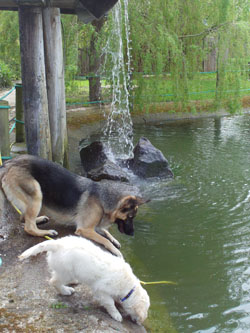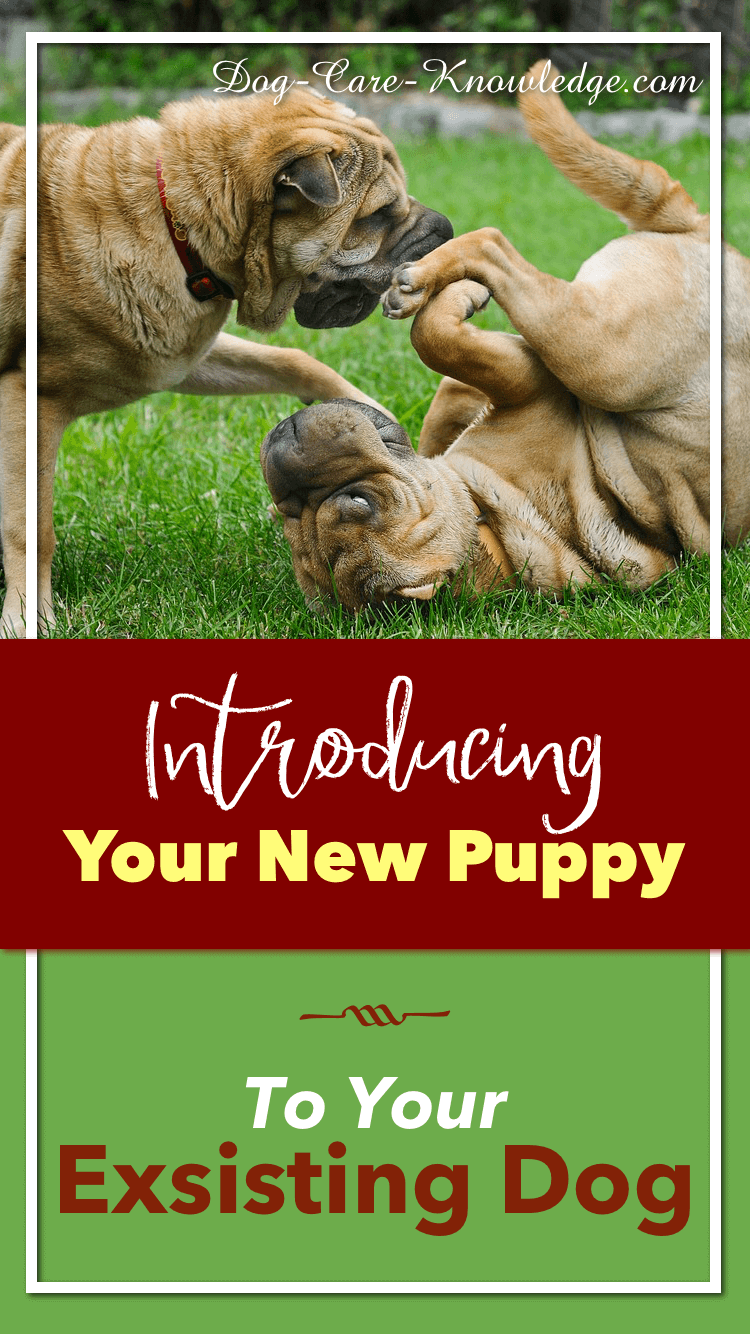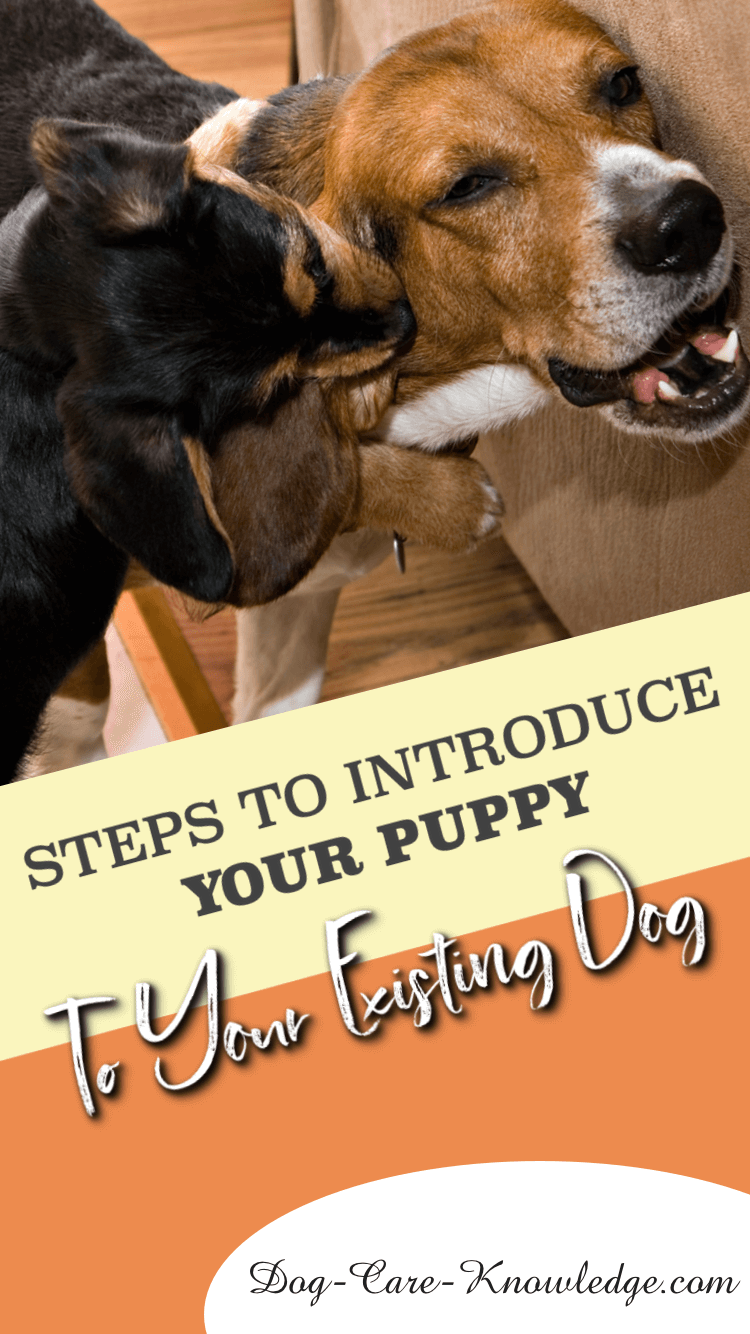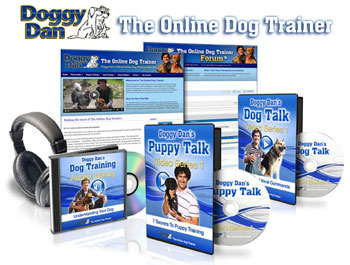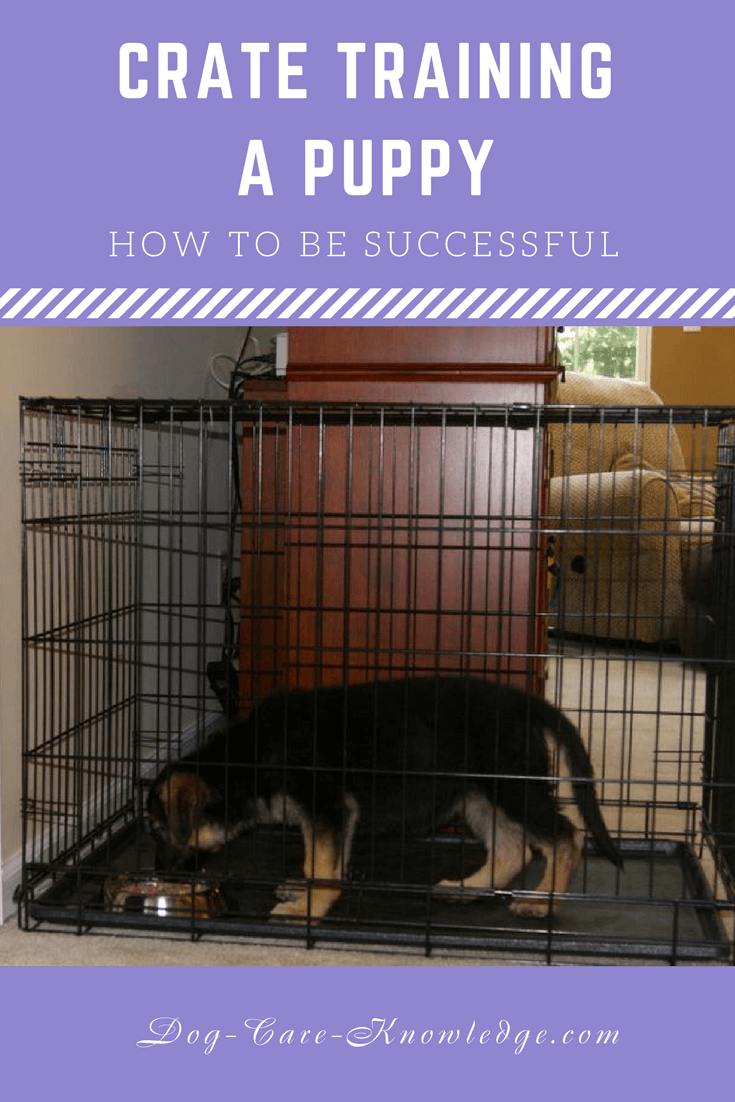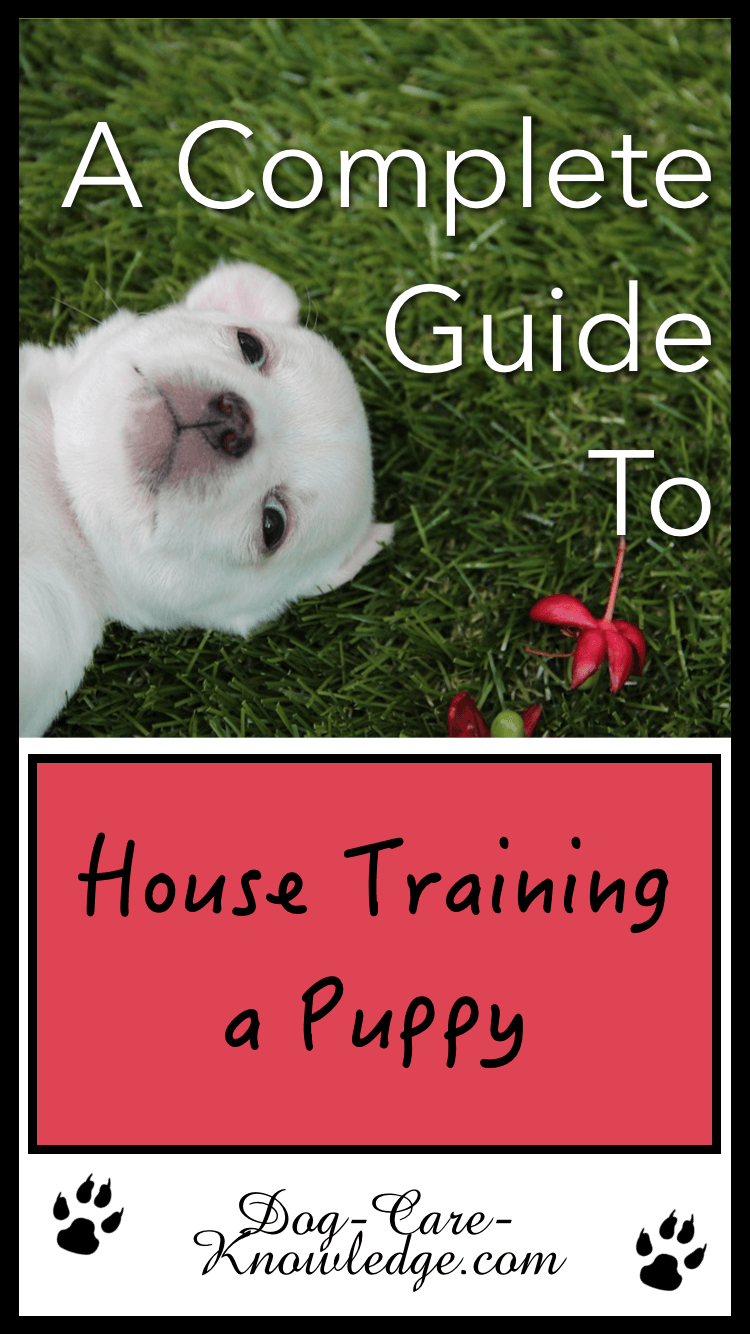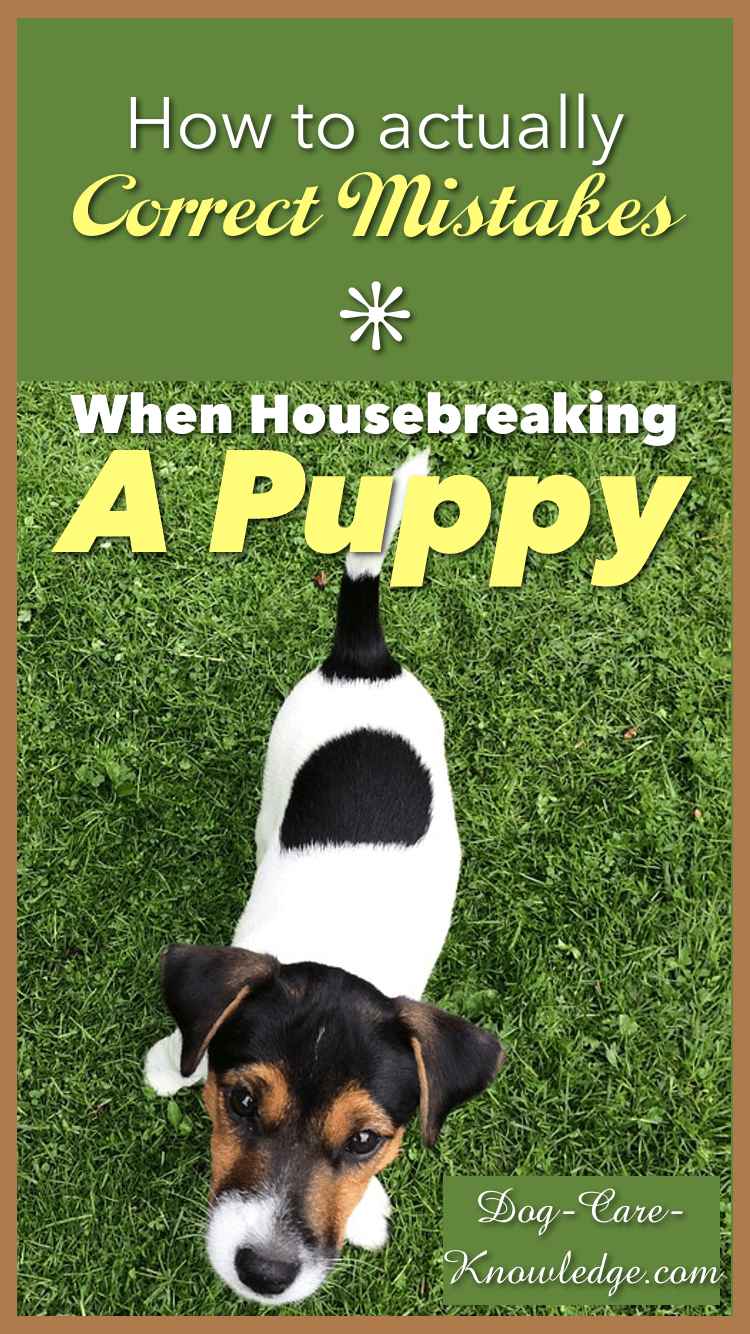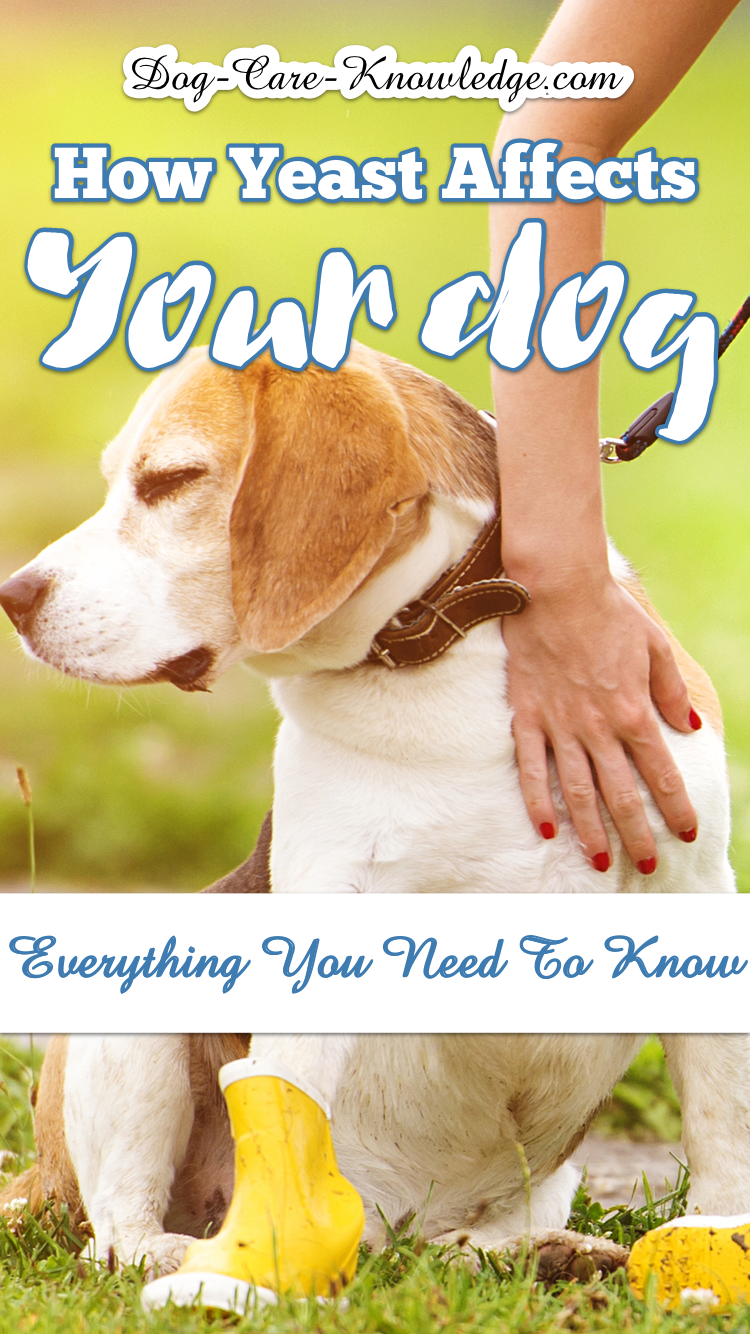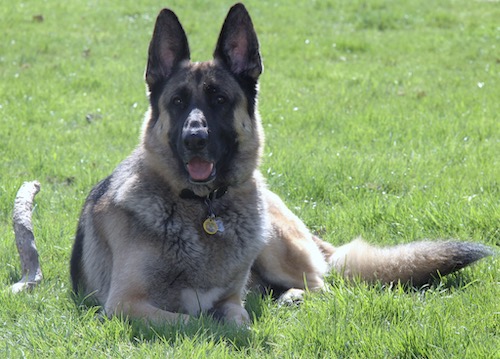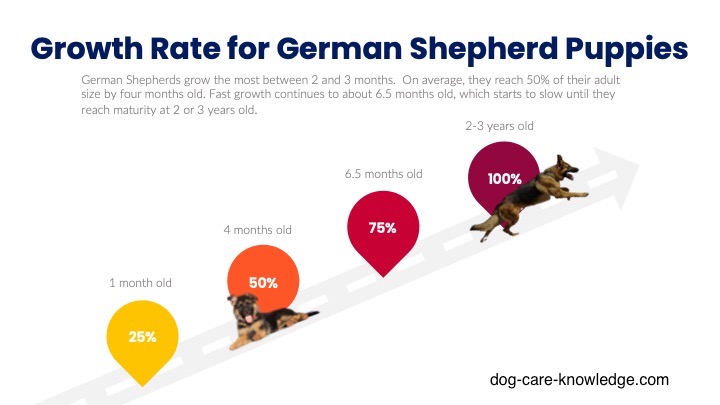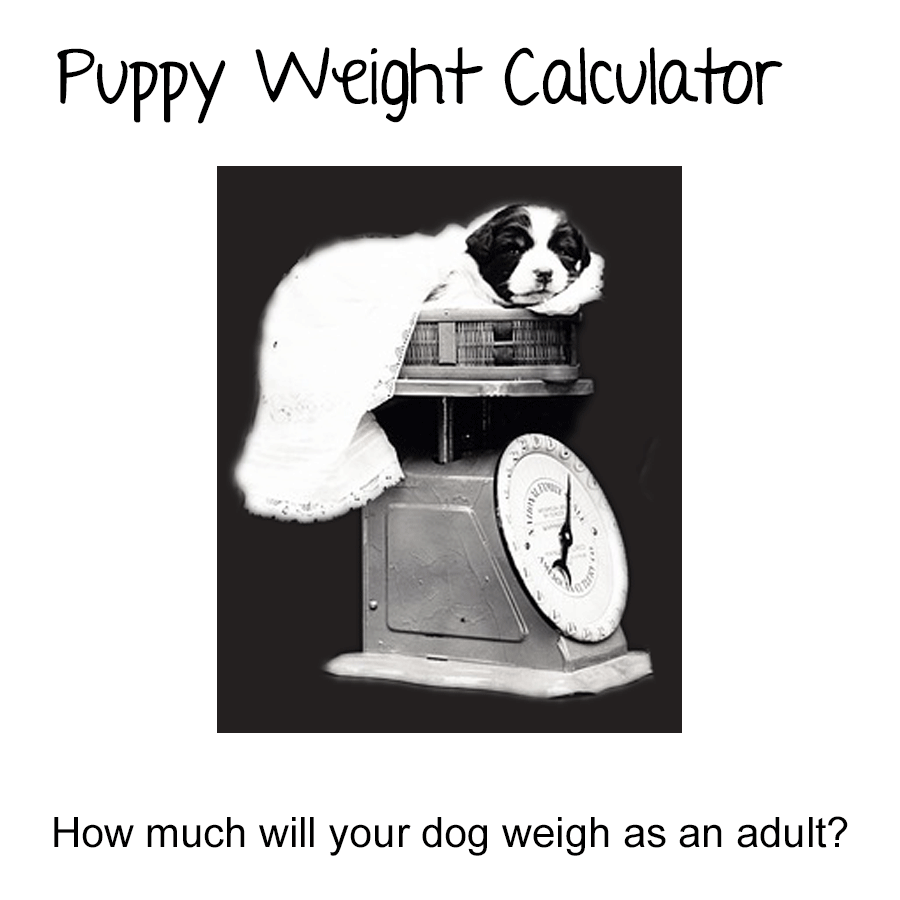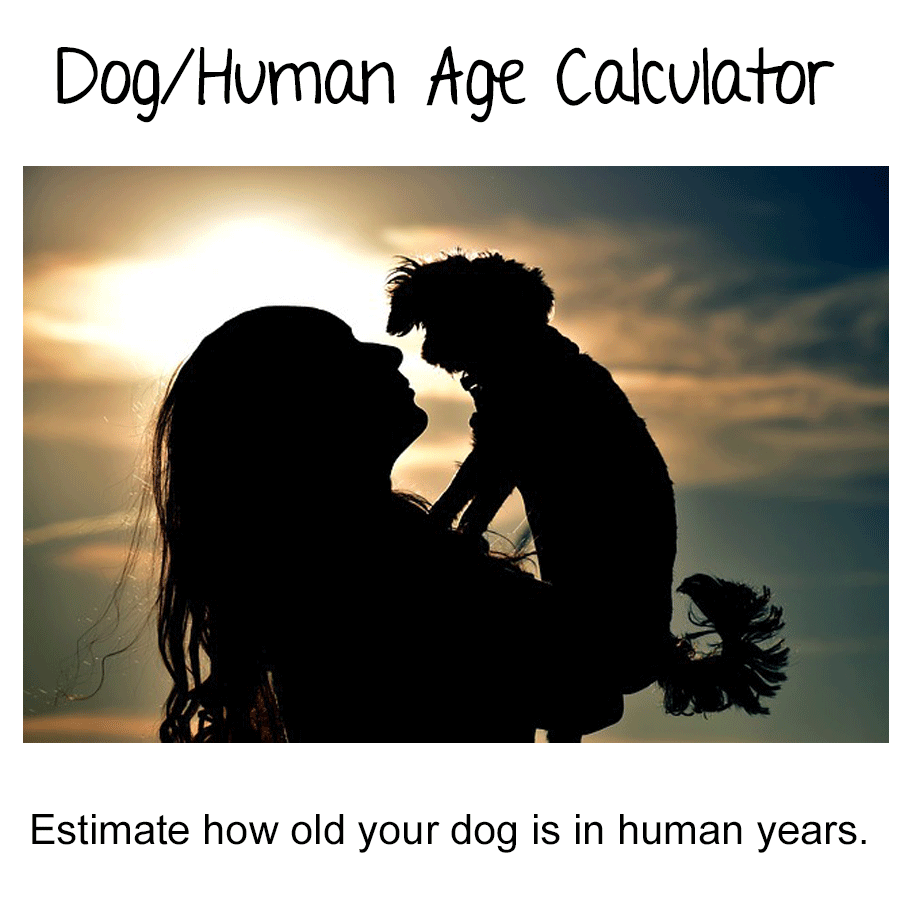- Home
- Puppy Information
- Introducing a New Puppy
Introducing a New Puppy
To Your Existing Dog
Introducing a new puppy, the right way, to your existing dog is extremely important. There are hundreds of households already coping with dogs that don't get along. They have to be managed with gates, crates and doors, and adopt a policy where they have only one dog out at a time. Not to mention the complicated, and somewhat risky, process of switching them over. It only takes one mistake in the timing and you have a dog-fight on your hands and in your home.
If you don't want this to be you, and I'm sure you don't, then follow these steps when introducing a new puppy to your existing dog to avoid problems, help the dogs bond, and of course, to teach them to become lifelong best pals.
Introducing a new puppy to your household, when you have an existing pooch, shouldn't be too difficult but does require a bit of planning. The most important part is that you do the introductions on neutral territory i.e. not in your own home. Use a neighbor's or friend's backyard rather than a public place and have at least two adults present to supervise.
Places To Try When Introducing a New Puppy
It's tempting to just bring your new puppy home and introduce him to your dog right there in your house or yard, but many dogs are territorial over their home, let alone being jealous of a new puppy. To avoid this problem altogether it's always best to do the first introduction at a neutral location.
When looking for a location, look for somewhere that is fenced, empty, and doesn't have a history of non-vaccinated dogs using the area. Below are some suggestions you can try:
- Neighbor's fenced yard
- Neighbor or friends house or basement area
- Fenced baseball field
- Veterinarians fenced area (ask permission)
- Doggie Day Care (ask for help, most will be glad to lend a hand)
- Dog rescue center (again, ask for permission and help)
Be prepared and take lots of tasty treats for both dogs. If your dog is OK with other dogs, it's best to do the introductions with both dogs off leash, if you think he may be a problem then just keep him on a loose leash until you know he is OK.
Even if he is sociable, friendly, and good with other dogs, it is still best to do the first introductions on neutral territory. First introductions are very important and you never get the chance to go back and re-do them. My advice would be to make every effort to get it right the first time.
Now, follow these steps.....and go slowly.
Steps To Introduce a New Puppy
- Bring both dogs to the chosen neutral location at the same time.
- As soon as you arrive, simultaneous hand feed both dogs.
- You can have one person feed the new pup but its best that your existing pooch gets the food from you. It's also OK to feed both dogs yourself.
- Now drop loads of good treats on the floor. Be careful if your existing dog is known to guard food, then throw the treats in opposite directions so they are not both grabbing at the same treats.
- Continue to hand feed and gradually move the pup and adult-dog closer.
- If at any point your pooch or pup become more interested in sniffing each other, then allow this to happen for a few seconds then....feed some more.
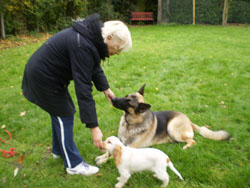
Why are we giving so many treats when introducing a new puppy? This is to create a positive association for your existing dog to seeing a new pup. We want your current best pal to think that introducing a new puppy is a wonderfully rewarding experience. It will also help to establish a good foundation for your relationship with your new pup.
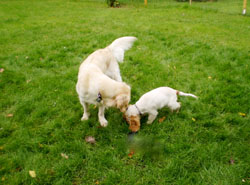
OK, So assuming that things are progressing well with introducing your new puppy, you can now simulate a joint walk around your neighbor's yard with both adult-dog and new pup.
FACT!
Dogs bond and socialize more when they are out on a walk "hunting" together.
If you can find an area that is NOT highly populated with other dogs it would be great to take both dogs on a nice walk together.
Signs of Aggression
If at any time you see any signs of stress or aggression, split the dogs up and try again 5 or 10 minutes later. Do not, under any circumstances, punish either dog for any undesirable behavior. This never works and will only make matters worse. Just keep trying these steps slowly.
If your adult-dog is displaying extremely aggressive behavior towards the new pup then you probably need to consult with a dog trainer or behaviorist before continuing with introducing a new puppy.
Shy Or Timid Puppy
It's highly unlikely that your new pup will display aggressive behavior but if she is extremely shy or timid then allow her to come to your adult-dog at her own pace.
Don't make a fuss of her if she shies away but reward her for any attempt to move closer to your adult-dog. Never pick the puppy up and force her to "meet" your pooch. That's way too scary for a young pup. Let her have her space so she can come forward at her own pace and retreat if she needs to.
Don't pamper your puppy if she is scared, this will only make her worse. Instead, ignore her if she runs away, hides, whimpers, or cries. Reward her with food when she comes forward.
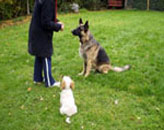 |
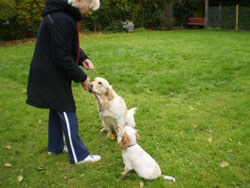 |
Introducing Multiple Dogs
If you have more than one existing dog at home then you need to do the introductions separately. Introducing a new puppy to an adult dog works much better if you do this one at a time before you have them all together.
Once everyone has been introduced and has had a nice walk around the yard, and assuming everyone gets on, you can take your new puppy, and other dogs, home. If they are going in the same car then I would make sure that you either have the new pup in the crate or have some other way of separating them at first.
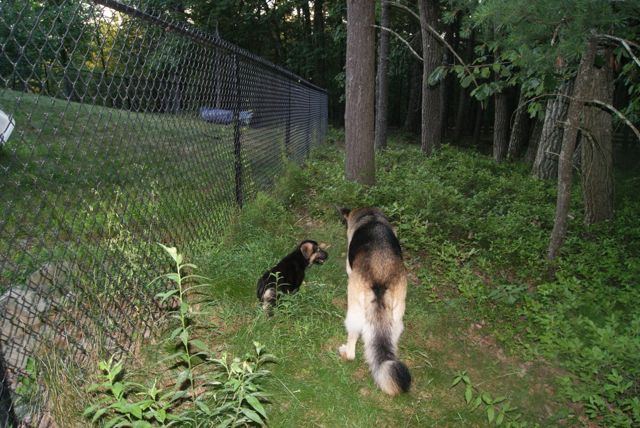
More Help Introducing a New Puppy
If you're more of a visual learner and would like to see some demonstrations, I've partnered with Doggy Dan, The Online Dog Trainer.
I encourage you to click here to learn how these videos can be of great benefit to your and dog.
Whether it’s introducing a new puppy, toileting issues, disobedience, fearfulness, or even aggressive behavior, I have found this series of videos to be highly useful...Let’s see if you do, too!
After the Initial Introductions
I would also continue to keep a close eye on them both for the next
couple of days and weeks as there may be some minor squabbles as they
adjust to the new arrangement. The new pup is going to be exuberant and
full of life and your adult-dog may "correct" some of this behavior.
Don't worry too much about this, its quite normal and the new pup is
probably used to it from its mother.
When chastised, your pup is
likely to show submissive postures, she may roll over and display her
belly as a way of an apology. Your adult-dog will back down when she
does this and order will resume.
Puppies don't have the best of
manners when young and are usually put in their place by an older dog,
so don't intervene and make a fuss of the pup for being told off. Continue
to keep an eye on them, but don't worry too much, its mostly noise.
Usually its all noise but if at any time you see blood (literally) from one the "reprimands" then this is the time to split them up and seek professional help from a trainer or behaviorist and of course a vet for the cut.
You can help the situation by crate training your puppy. This way you can put your pup in her crate if she pesters your adult-dog too much or when you can't watch them. Not as a punishment though, the crate is just a tool to help her learn to calm down and as long as you crate train her properly, your puppy shouldn't see her crate as a "sin-bin".
Introducing a puppy to a home and dog should be fairly simple if these steps are followed. Within a few weeks your puppy and dog should be bonding quite nicely and will soon be best of pals.
